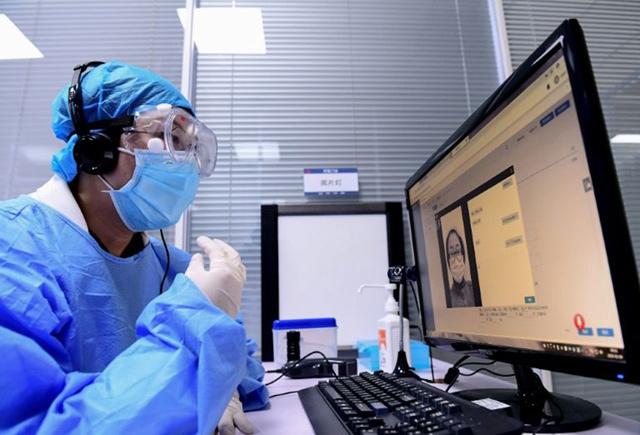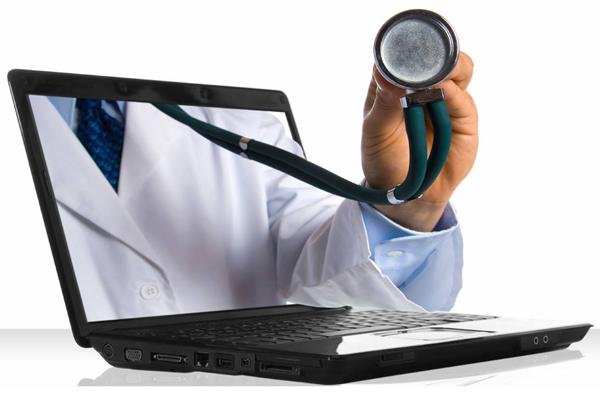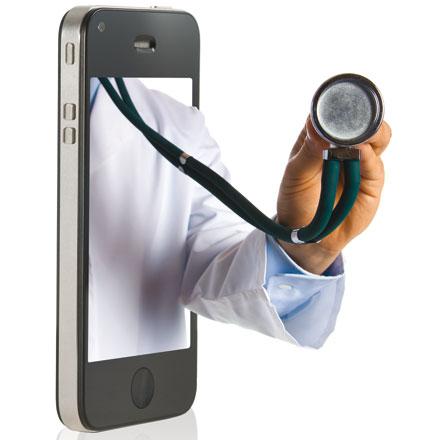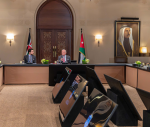You are here
As doctors go virtual, pandemic turbocharges telemedicine
By AFP - Jun 02,2020 - Last updated at Jun 02,2020

Doctors across the world have moved consultations online (AFP photo)
PARIS — Will visiting the doctor ever be the same again?
In a matter of weeks, the coronavirus pandemic sparked a technological revolution in healthcare systems across the world that might otherwise have taken years.
Spurred on by fears of contagion in wards and waiting rooms, many health practitioners are replacing the face-to-face meetings that have always underpinned general practice, with patient consultations by telephone and online video apps.
Some of the most radical changes have been in primary healthcare, where doctors have often faced shortages of protective equipment, but specialists in everything from mental health to eye care have also turned to technology to treat patients at a distance.
“General practice has undergone significant changes in the way GPs and our teams have delivered patient care during the pandemic — and the speed in which these changes were implemented has been remarkable,” Professor Martin Marshall, chair of Britain’s Royal College of GPs told AFP.
As the virus spread, health authorities in the UK, Europe and elsewhere updated guidance on everything from data protection to how to build trust remotely.
The United States rolled back restrictions on access to telemedicine, and eased privacy regulations to allow people to use platforms like Skype and FaceTime.
“People are now seeing this model, which we thought would take years and years to develop. And it’s probably been accelerated by a decade,” Chris Jennings, US policy consultant and former White House health care adviser told STAT news recently.
Globally, 58 per cent of surveyed countries are now using telemedicine, the World Health Organisation (WHO) said on Monday, adding the figure was 42 per cent among low income nations.
Layla McCay, a director at the NHS Confederation representing British healthcare services, told AFP that most of the UK’s 1.2 million daily face-to-face primary care consultations were done remotely “in the space of weeks”.
But there were challenges.
“My first video consultation was a mess. Builders were drilling, the microphone failed, a colleague walked in, and lockdown was imminent,” Camille Gajria, a doctor and clinical teaching fellow at Imperial College London, told the British Medical Journal.
She said teleconsultations can be efficient but warned of “cognitive bias” — a doctor, for example, might assume that a child playing in the background is the one being discussed.
There are also concerns that vulnerable patients might find it difficult to talk about mistreatment at home, while elderly people could struggle to navigate unfamiliar technology.
Remote medicine
Telemedicine may seem like a product of the internet age, but it has been around for decades, developing alongside communication technology.
One big leap came during the space race of the 1960s, when scientists worried about the effect of zero gravity on the human body. Would it impede blood circulation or breathing?
To find out, both the US and Soviet Union conducted test flights with animals hooked up to medical monitoring systems that transmitted biometric data back to scientists on Earth. Later, longer missions meant astronauts needed systems that could diagnose and help treat medical emergencies.
NASA went on to develop terrestrial telemedicine, including a project to provide healthcare to the isolated Tohono O’odham reservation in Arizona, as well as disaster response in the 1985 Mexico City and 1988 Armenia earthquakes.
While the coronavirus pandemic has driven sweeping changes in the way many people see their local doctor, it has also highlighted the role telemedicine can play in connecting clinicians with remote communities.
In India, which has just 8.6 medical workers per 10,000 people according to 2018 WHO figures, the majority of doctors are concentrated in urban centres, while some 70 per cent of people live in rural areas.
Ayush Mishra, founder of the telehealth provider Tattvan, said this means people outside bigger towns are often forced to seek medical advice from overstretched or ill-qualified practitioners.
His business, one of a growing number of telehealth providers in India, operates 18 clinics, mostly ATM-style booths that are manned by a medical assistant who can take vital measurements and linked with doctors in private hospitals in larger towns.
The firm languished in a legal grey zone for years until the coronavirus crisis spurred the government into broadening regulatory approval for virtual consultations. Now he hopes to open hundreds of clinics around the country.
Mishra traces his enthusiasm for telemedicine to a horrific motorbike accident when he was a biomedical engineering student in the northern city of Jaipur.
Severely injured, he was driven ten hours to his hometown in Uttar Pradesh, before falling into a coma as a local doctor performed surgery.
His family was overwhelmed by “panic” until his father spoke by telephone to a surgeon at a hospital in Delhi, enabling them to arrange treatment in the city.
Mishra lost his leg, but told AFP the experience inspired him to want to equalise medical access for people in smaller towns.
“You need to be able to offer this access — it’s a human right,” he said.
Not going back?
Internet-connected thermometers, pulse oximetres to measure oxygen levels, and smart devices that monitor vital signs are all widening the scope of what is possible in remote medicine.
In an April article for JAMA neurology, experts from The Netherlands and US said telemedicine could be a useful tool for in-home training, such as activities for survivors of stroke. Patients, they noted, could be monitored via sensors in watches or phones.
“We hope that this current COVID-19 crisis will soon be resolved. However, it is as the old saying goes: ‘never waste a good crisis’,” they said.
“Telemedicine for chronic neurological disorders should become part of the new normal rather than the exception.”
Marshall said there are still many routine procedures — vaccinations, blood tests and physical examinations — that cannot be done remotely.
“Those living with multiple conditions and other complex health needs really benefit from seeing their doctor in person — and this is helpful for the GP, as well,” he said.
But he added that research supports the use of remote consultations for patients with simple conditions, or who have “transactional” needs like a repeat prescription.
Many say they want at least some of the changes to stay.
“It has certainly turbocharged the digital transition nationally,” said McCay of the NHS Confederation.
“Lots of feedback from our members shows the culture has fundamentally changed, and clinicians who were perhaps previously resistant to digitisation are now realising its benefits.”
“We can’t go backwards,” she added.
Related Articles
SAN DIEGO — Is healthcare going the way of Uber?Though it may sound far-fetched, seeing a doctor could move in that direction if telem
AMMAN — The use of technology in various fields, especially in the field of healthcare, “greatly contributes” to accessing and updating info
LONDON — London-based Babylon Health says its artificial intelligence (AI) technology, in tests, has outperformed most physicians in assessi














